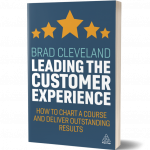With a clear vision and sound processes, the right technology solutions for your customer experience efforts tend to come into focus. Some improvements will be incremental — small wins here and there — and others will be more sweeping. In some cases, you might even use technology to create new markets.
As you look for ways to leverage technology — whether incremental or disruptive — here are some important lessons:
Avoid applying technology solutions to broken processes.
If customers complain they don’t receive follow-up as promised, the most elegant fix may be to eliminate the need for follow-up. Empower employees to make the critical decision on the spot (perhaps with AI-enabled decision-making tools). Let go of or reshape processes that are cumbersome or broken.

You’ll want to test that you’re solving the right problems and not creating new ones. For example, you might find (as one organization did) that the new web application works great, but that some features aren’t available in Safari. If Safari is the preferred browser of Apple-evangelist customers, you might rethink rollout. In another example, the data you require your privacy-conscious customers to share to use the app makes them nervous. So much so that they’re posting on Reddit today — a warning that’s going viral. (These were both real-life examples of technology solutions that failed to hit the mark. The reason? Experience designers — developers, product managers, user experience designers — didn’t anticipate the barriers.)
Coordinate with and incorporate digital transformation efforts.
Many organizations have “digital transformation” initiatives underway. (Digital transformation broadly refers to harnessing digital technologies to improve efficiencies and create new or better experiences for customers and employees.) These efforts are not always coordinated with or part of customer experience initiatives. Ideally, digital transformation should be part of — a subset of — customer experience management. At the least, ensure that digital transformation and customer experience aren’t on two different and uncoordinated tracks.
Don’t fall for promises of magic.
Millions of dollars are wasted each year on technologies that are never delivered, never implemented, sit idle, or (most commonly) simply fail to deliver promised results. While customer experience technology spending continues to break records, many organizations still struggle to provide satisfying experiences to their customers. Prioritize technology that supports your customer experience vision and goals. Pursue technologies that help you get closer to your customers, and to deliver experiences that are effective and simple.




0 Comments